Relative minor and relative major scales are essential tools in music production.
They each have their own characteristics and roles, as well as the power to shape the emotional tone of your music.
That’s why, in today’s article, we’ll be breaking down:
- Major scale basics ✓
- What is a relative minor ✓
- Minor scale essentials ✓
- The role of relative majors ✓
- Expert tips & techniques ✓
- What a key signature is ✓
- Exercises for mastering the relative minor scale/major scale ✓
- Relative keys & their importance ✓
- Avoiding common mistakes ✓
- Much more about major and minor relative scales ✓
Afterwards, you’ll know everything about how the relative minor and relative minor scales interact and complement each other (plus what the difference between them is).
This way, you can create more dynamic tracks and successfully express your musical ideas like a professional.
Your tracks will sound on point and theoretically correct, and you’ll learn how to use these scales for any type beat.
So, let’s dive in…
Table of Contents
Breaking Down The Major Scale
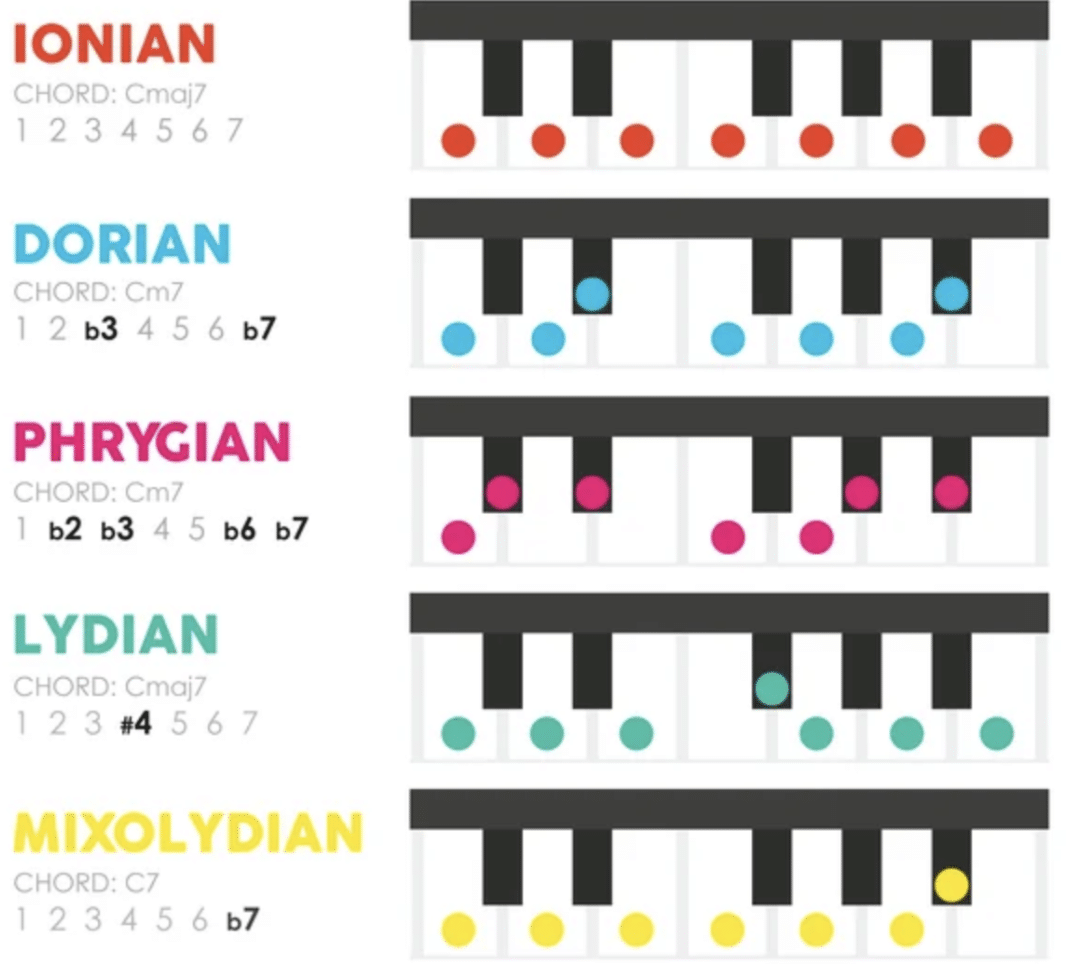
The major scale is a fundamental music theory concept, essential for understanding how melodies and harmonies are built.
For example, the C major scale consists of the notes C, D, E, F, G, A, and B, without any sharps or flats 一 reflecting its major key signature.
This scale sets a bright and uplifting tone, typical of major scales, which are key in setting the overall mood in various musical contexts.
Each note in the scale plays a huge role in building the scale’s harmony, with the root note holding down the tonal center.
In production, understanding the structure of major scales is very important as it affects everything from creating melodies to chord progressions.
The intervals between the notes’ whole steps (except between E-F and B-C, which are half-steps) define the major scale’s distinct sound.
When producing tracks that need to shine, manipulating these intervals allows producers to knock out unique sounds and moods.
It will also help you explore more complex scales and musical concepts, such as relative minor scales, which will enhance your versatility as a producer.
Using The Relative Minor Scale To Unlock Creative Potential
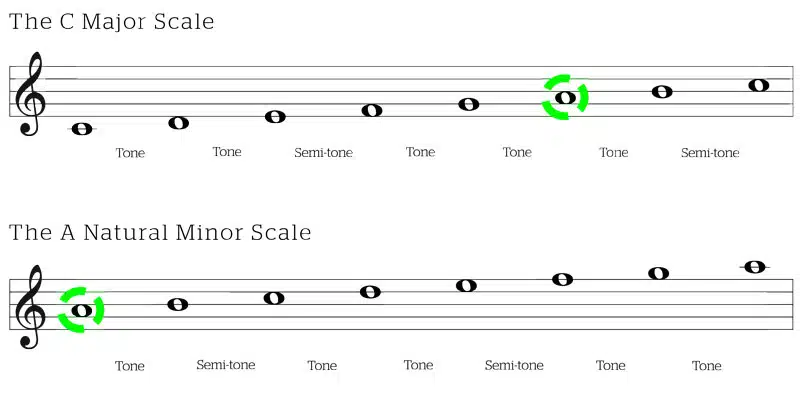
Understanding the concept of the relative minor scale will help you add emotional depth and complexity to your tracks.
Each major scale has a corresponding relative minor scale, which begins on the sixth degree of the major scale.
For the C major scale, this relative minor is the A minor scale, consisting of the same notes: A, B, C, D, E, F, and G.
This scale shares the same key signature as C major, with no sharp minor/major notes or flats, but starts on a different note.
It emphasizes a completely different emotional tone.
Using the relative minor allows you to shift the mood of your music without a hitch 一 from cheerful to more contemplative.
This scale is especially useful in genres that rely heavily on emotional expression, such as blues, jazz, and cinematic music.
By mastering the relative minor scale, you can enhance your musical storyline, and give your audience a more immersive experience.
Remember, the ability to alternate between the major and relative minor scales can vastly expand your creative possibilities, making your music more complex and appealing.
Mastering Minor Scales in Music Production
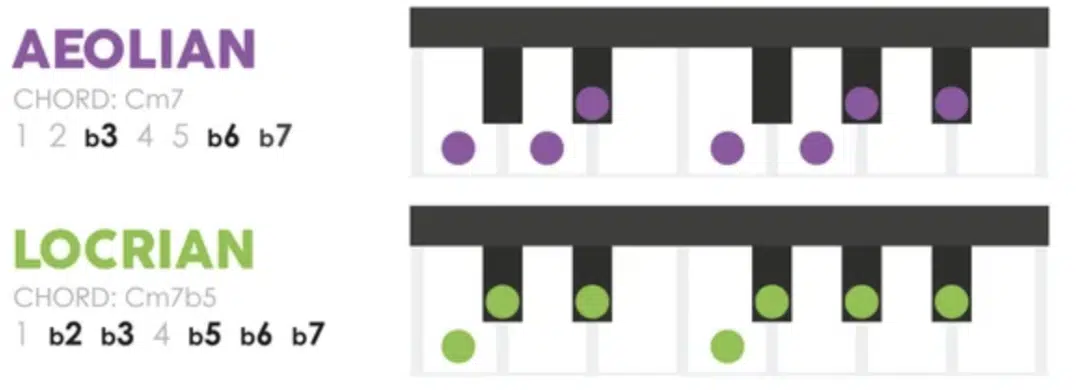
Minor scales bring a depth of emotion and complexity to music that major scales cannot replicate.
The natural minor scale, or Aeolian mode, is built from a specific sequence of intervals: whole step, half step, whole step, whole step, half step, whole step, whole step.
Starting from A, the natural minor scale would be A, B, C, D, E, F, G, A, differing from the A major scale by its:
- Lower third scale degree
- Sixth scale degree
- Seventh scale degree
This scale is key (no pun intended) to creating that moody, sadder atmosphere prevalent in all minor keys.
For music producers like us, the ability to manipulate and understand minor scales is essential for laying down tracks that really make your listeners feel something.
Whether you’re creating background tracks for games or laying down the next big EDM hit, knowing how to use minor scales effectively can set your work apart.
The flexibility of these scales also help with innovative sound design 一 providing a foundation for building tension and drama within your music.
Mastery of minor scales will give you the tools/skills to manipulate mood and emotion, vital for producing impactful music.
-
Pro Tip: Major to Minor Transitions
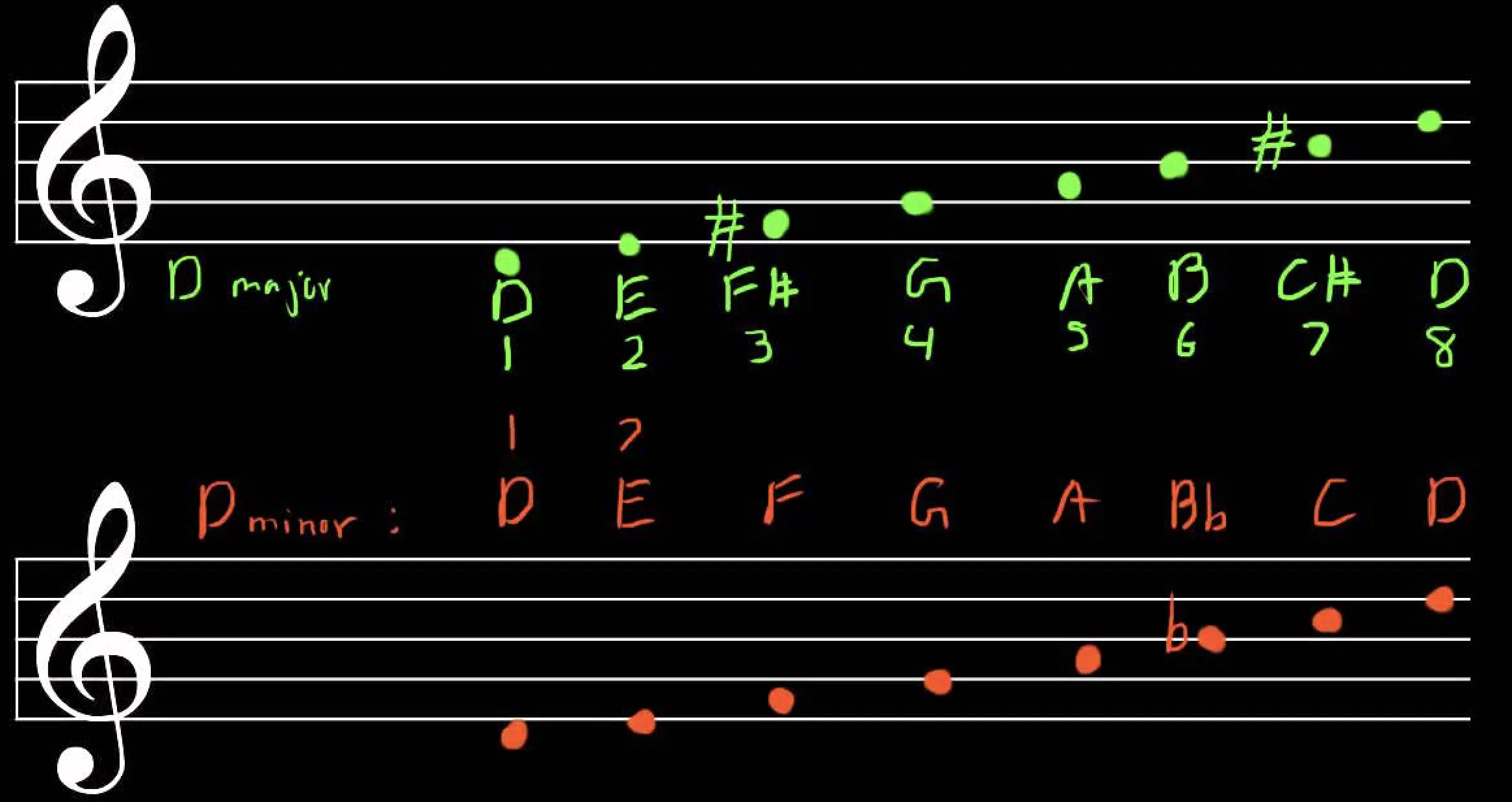
Transitioning between major and minor scales in a single piece can turn up the emotional range in a great way.
One solid technique is modulating from a major key to its relative minor, which can subtly alter the mood without disrupting the musical flow.
Understanding this unique relationship will help you easily determine the vibe of your track and help you avoid any confusion.
For example, transitioning from C major to A minor involves shifting the tonal center to A while maintaining the same notes…
This can introduce a more reflective or somber tone, and captivate your audience all over again (which is always great).
These transitions are not just theoretical 一 they are widely-used tools that can add significant depth to your music.
By mastering these changes, you can guide your listener’s emotions in the right direction, making your tracks more compelling and emotionally diverse.
NOTE: This skill is very useful in film scoring and more progressive music genres, where the emotional vibe of a piece often shifts dramatically.
The Power of Relative Majors in Arrangement
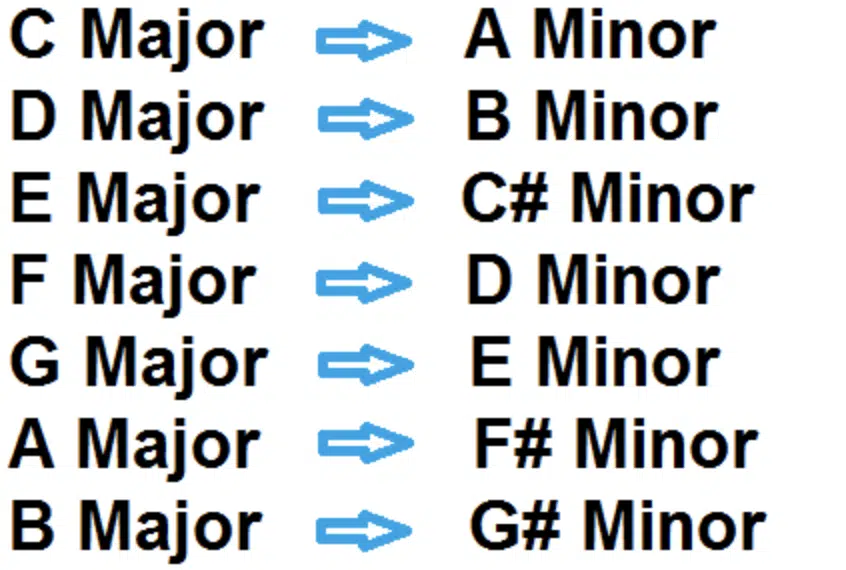
Relative major scales offer a mirror image of their minor counterparts, providing a bright moment thrown in between the darker tones of minor scales.
By understanding the relationship between relative minors and majors, you can enhance your musical arrangements with greater harmonic diversity.
For example, the relative major of A minor is C major (not G major), using the same notes but centering around C as the tonal home…
In turn, it gives a lift to the otherwise melancholic A minor.
This technique can be super effective in genres that fluctuate between emotional extremes, such as progressive rock or cinematic soundtracks.
Because, of course, the contrast between light and dark themes is everything.
Taking advantage of the potential relative major scales have to offer can revolutionize the way you think about composing and arranging music.
By switching to a relative major key during a bridge or chorus, you can inject a sense of optimism or resolution into your tracks.
Anything to bring a refreshing contrast that keeps your listeners engaged is always a good thing.
It’ll not only showcase your technical skills but also your creative capacity to weave complex emotional narratives within your music.
NOTE: This understanding of how relative majors and minors interact is key when you’re looking to deepen the emotional impact of your tracks.
Expert Techniques Using Relative Scales/Relative Keys
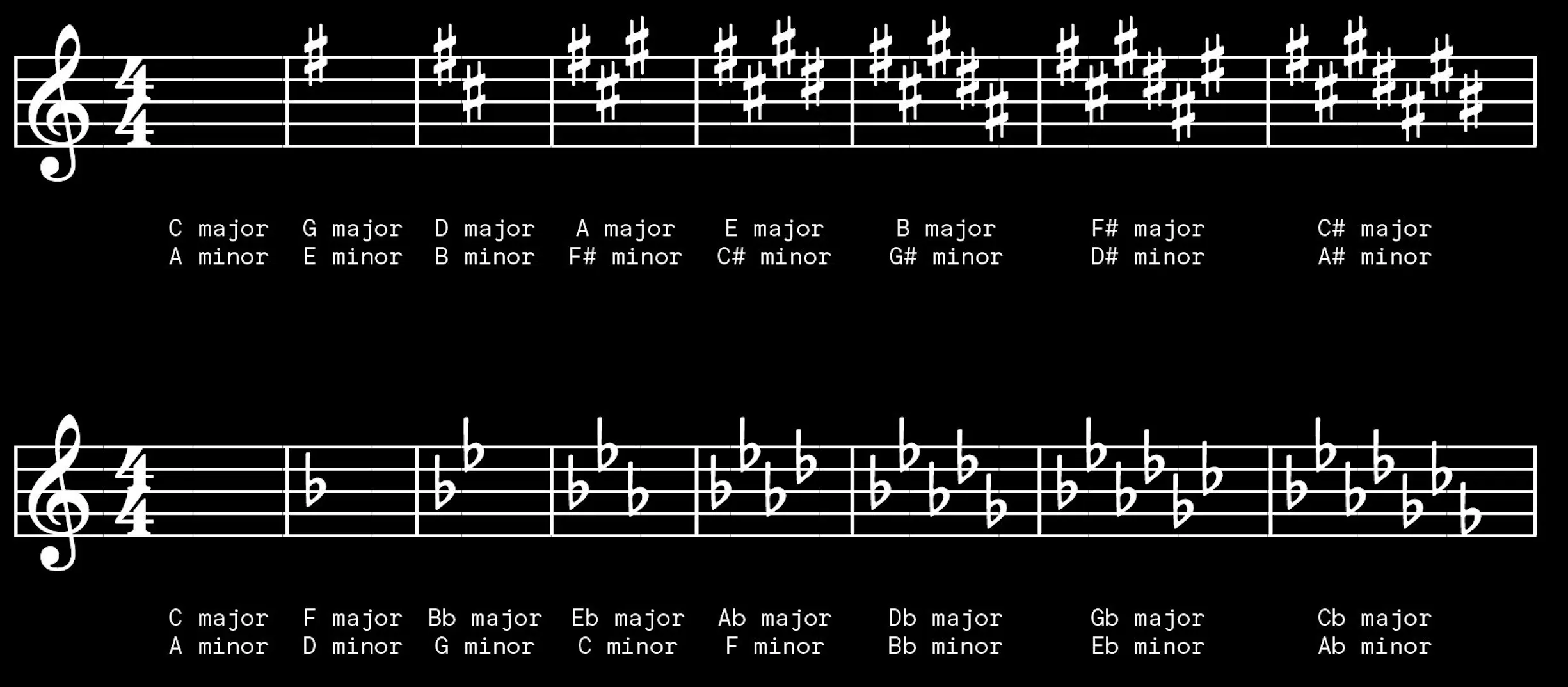
Using relative scales effectively in your productions involves more than just knowing their notes; it’s about how exactly you use them to enhance your music.
One advanced technique is to use motifs or melodic phrases that adapt and evolve as they transition between a relative minor key and relative major key.
For example, your melody might:
- Start in the minor key, expressing a sense of longing or melancholy.
- Then, repeat in the major key to bring a resolution or uplift.
Remember, it’s all about enhancing the melody and strengthening the flow of your track.
Another effective strategy is to layer chords from both relative minor and major keys to create unique harmonic textures.
By playing chords from the relative major over a minor melody (or vice versa) you can produce a complex soundscape that adds depth and intrigue to your music.
For example you could start a chord progression in a minor key and then switch to its relative major for the chorus to lift the overall feel of the song.
NOTE: This is super popular in pop or electronic music because that dynamic shift is what keeps people invested. Remember, it’s all about playing around with different techniques and combinations.
-
Pro Tip: Exercises with Relative Scales
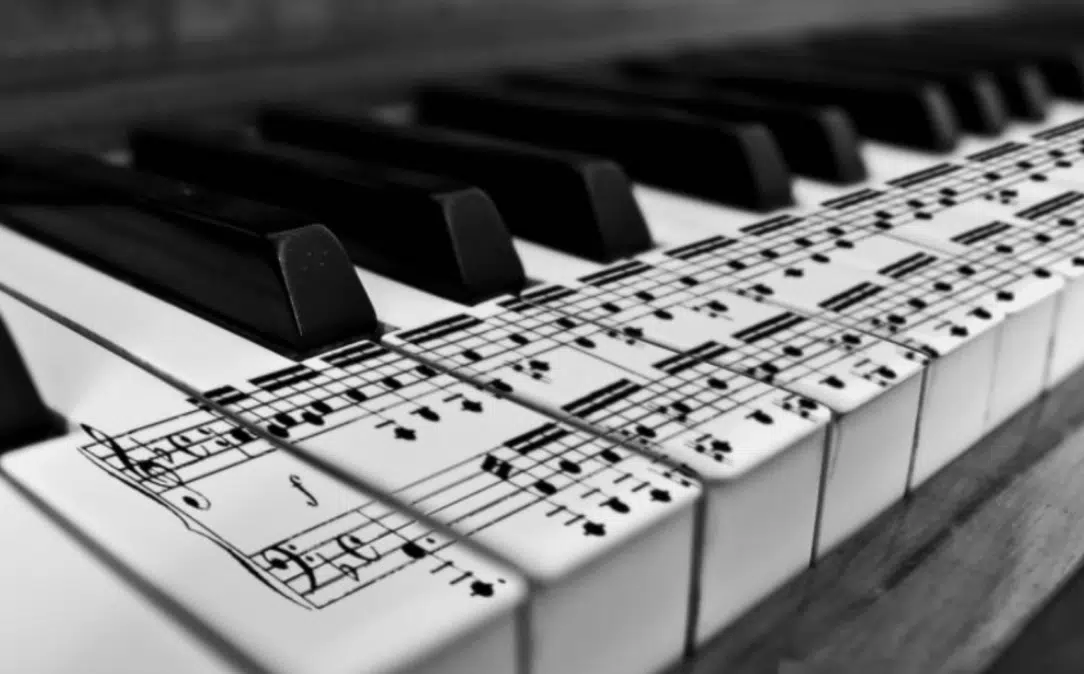
Practice makes perfect, as they say, so make sure to spend some time doing the following 4 tips so you can improve your skills when it comes to relative scales.
#1. Start by creating simple chord progressions in a major key and then rewriting them in its relative minor to hear how the mood shifts.
For example, experiment with a chord progression like C, F, G in C major and then play Am, Dm, Em in A minor.
Listening to how the emotional tone changes with the key can deepen your understanding of the scales’ impact on your music.
I know it sounds simple, but it’s all vital to becoming a true master.
#2. Another useful exercise is to improvise melodies over a fixed chord progression using both the major and relative minor scales.
It won’t only give you more experience with scales, but teach you how to navigate between them flawlessly.
#3. Recording these improvisations and analyzing them can provide insights into how different scale choices affect the emotional quality of your melodies.
This is, without a doubt, invaluable for developing your unique sound as a music producer.
#4. Don’t forget about rhythm and pacing when switching between scales. A sudden change in key can feel abrupt and displeasing if you don’t do it right.
Relative Minor & Relative Major Scale: Final Thoughts
Relative minor and relative major scales are super versatile and impactful in music production.
They’re important for creating depth and emotional resonance in your music.
And now, you’ll be able to confidently use these scales to craft tracks that truly stand out and resonate with your audience.
Plus, make sure to keep experimenting with these scales and refining your techniques to enhance your musical expression.
For those looking to really dive deep and accelerate their production process, check out the invaluable Aeolian (Natural Minor) Advanced Scales MIDI Collection.
This collection contains over 1,100 Aeolian MIDI scales, chords, progressions, and melodies that will instantly make your music stand out.
It will help you quickly lay down complex ideas and give your tracks a sick edge.
Plus, eliminate the need to spend years learning all about music theory by having all the melodic elements you need at your fingertips.
You’ll have the perfect-sounding foundation for your track every single time, so you can knock out more hits than you ever thought possible.
Remember, keep exploring these scales and using tools like the Advanced Scales MIDI Collection to elevate your music to professional heights.
Until next time…







Leave a Reply
You must belogged in to post a comment.